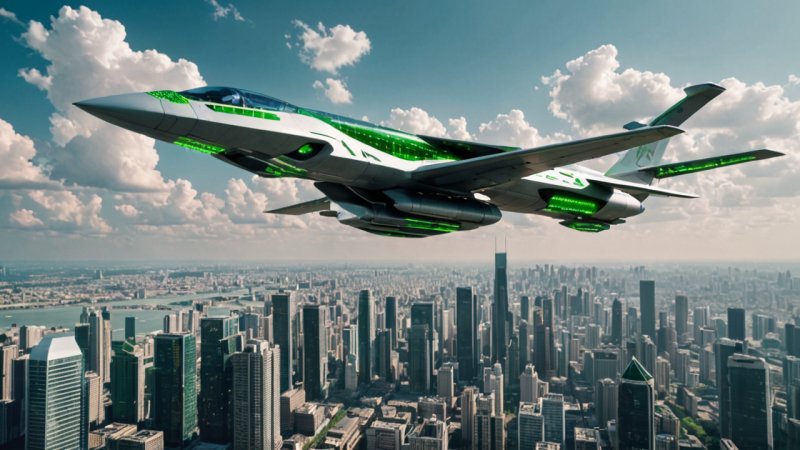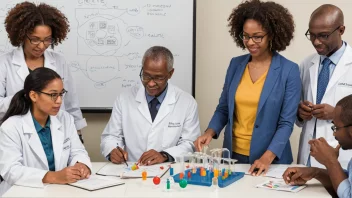Aerospace engineering stands at the forefront of technological advancement, playing a pivotal role in shaping the future of transportation, exploration, and communication. As we venture deeper into the 21st century, the field faces a myriad of challenges that test the limits of innovation and creativity. From the quest for sustainable aviation to the complexities of space exploration, aerospace engineers are tasked with solving problems that require not only technical expertise but also a visionary approach to engineering. This article delves into the intricacies of aerospace engineering, highlighting its current challenges, groundbreaking innovations, and the future trajectory of this dynamic field.
The Evolution of Aerospace Engineering
The roots of aerospace engineering can be traced back to the early 20th century when pioneers like the Wright brothers laid the groundwork for powered flight. Over the decades, the field has evolved dramatically, driven by advancements in materials science, propulsion technology, and computer simulations. The advent of jet engines revolutionized air travel, enabling faster and more efficient flights. Meanwhile, the space race of the 1960s propelled aerospace engineering into a new era, leading to significant achievements such as the Apollo moon landing. Today, aerospace engineering encompasses a wide range of disciplines, including aerodynamics, avionics, and structural analysis, making it one of the most interdisciplinary fields in engineering.
Current Challenges in Aerospace Engineering
Despite its rich history and significant advancements, aerospace engineering faces several pressing challenges that require innovative solutions:
- Sustainability: One of the most critical challenges is reducing the environmental impact of aviation. The aviation industry is responsible for a substantial percentage of global greenhouse gas emissions. Engineers are exploring alternative fuels, electric propulsion systems, and more efficient aircraft designs to minimize this footprint.
- Safety and Reliability: As air travel becomes more accessible, ensuring the safety and reliability of aircraft remains paramount. Engineers must continually improve safety protocols and technologies to prevent accidents and respond effectively to emergencies.
- Space Exploration: With renewed interest in space exploration, including missions to Mars and the Moon, aerospace engineers face challenges related to spacecraft design, navigation, and life support systems. Developing technologies that can withstand the harsh conditions of space is essential for successful missions.
- Technological Integration: Modern aircraft are becoming increasingly complex, integrating advanced technologies such as artificial intelligence, automation, and connectivity. Engineers must ensure that these systems work seamlessly together while maintaining safety and performance standards.
Innovations Shaping the Future
In response to these challenges, aerospace engineering is witnessing a wave of innovations that promise to reshape the industry:
Electric and Hybrid Aircraft
Electric and hybrid propulsion systems are gaining traction as a means to reduce carbon emissions. Companies like Airbus and Boeing are investing in research and development to create more sustainable aircraft. These innovations could revolutionize short-haul flights and urban air mobility, making air travel cleaner and more efficient.
Advanced Materials
The use of advanced materials, such as carbon-fiber composites and lightweight alloys, is transforming aircraft design. These materials not only reduce weight but also enhance fuel efficiency and performance. Research into smart materials that can adapt to changing conditions is also underway, potentially leading to aircraft that can self-repair or optimize their shape for better aerodynamics.
Autonomous Systems
Autonomous flight technology is making significant strides, with the potential to enhance safety and efficiency in aviation. Unmanned aerial vehicles (UAVs) are already being used in various applications, from delivery services to surveillance. As regulations evolve, we may see a future where autonomous commercial flights become a reality.
Space Tourism
Space tourism is no longer a distant dream, thanks to private companies like SpaceX and Blue Origin. These pioneers are developing spacecraft capable of carrying civilians into space, opening up new frontiers for exploration and research. The engineering challenges associated with human spaceflight, such as life support systems and safety measures, are at the forefront of this exciting venture.
The Role of Collaboration and Research
The challenges and innovations in aerospace engineering highlight the importance of collaboration between academia, industry, and government. Research institutions play a crucial role in advancing knowledge and developing new technologies. Partnerships between universities and aerospace companies foster innovation and provide students with hands-on experience in real-world projects. Additionally, government agencies, such as NASA and the European Space Agency, contribute funding and expertise to support groundbreaking research initiatives.
Looking Ahead: The Future of Aerospace Engineering
As we look to the future, the field of aerospace engineering is poised for continued growth and transformation. The integration of new technologies, a focus on sustainability, and the drive for exploration will shape the next generation of aerospace engineers. Educational programs must evolve to equip students with the skills needed to tackle these challenges, emphasizing interdisciplinary approaches and innovative thinking.
In conclusion, aerospace engineering is a dynamic field that embodies the spirit of innovation and exploration. While it faces significant challenges, the ongoing advancements in technology and materials science offer promising solutions. By fostering collaboration and embracing new ideas, the aerospace industry can navigate the complexities of the present and soar into a sustainable and exciting future.






